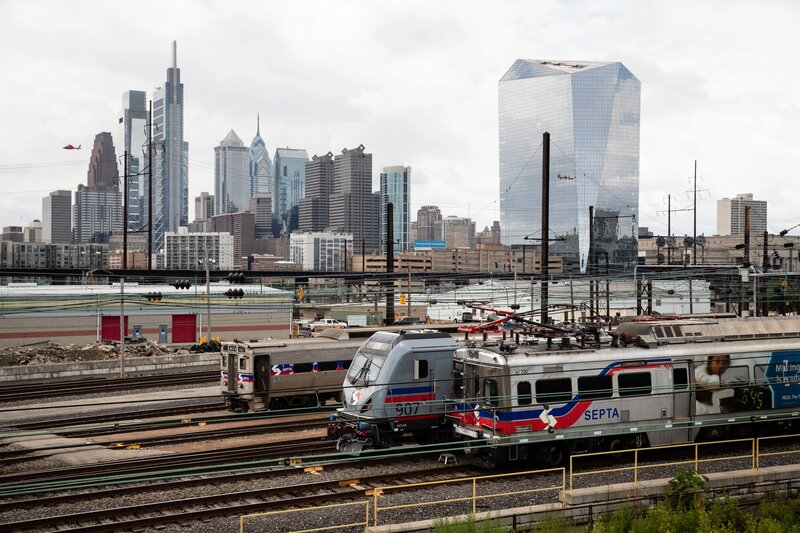SEPTA Attack Sheds Light on Authorities’ Failures
Women have long approached public transit apprehensively. When there are numerous reports of harassments, assaults and robberies aimed mainly at women, who can blame us?
On Oct. 13, yet another woman was the victim of an attack, this time on Philadelphia’s public transportation system, SEPTA. The attacker was arrested, but not before harassing her for nearly an hour and raping her.
When reports of the incident came out, people unquestioningly believed claims by police that bystanders chose to record the conflict instead of stepping in. However, on Oct. 21, Delaware County’s District Attorney spoke in defense of his citizens, claiming that this narrative of inaction was false. Many people had already taken to social media to shame the riders, rather than focusing the blame on the attacker. Some people did both, but the actual attack took a back seat to the criticisms launched at so-called phone obsessed members of a clueless generation. In reality, the police over-simplified and misreported the truth.
Officials were the first to criticize the bystanders of this attack. The SEPTA Police Chief, Thomas J. Nestel III, claimed that riders were recording the attack rather than helping the woman. The Superintendent of the Upper Darby Police Department expressed his distaste for the riders’ alleged carelessness, saying, “It speaks to where we are in society; I mean, who would allow something like that to take place?”
It wasn’t the riders who allowed it to take place; it was the police. Reports by the county’s D.A. clarified that it was likely unclear to riders what was going on, and that people were constantly getting on and off of the train. Even if someone stepped in, it is uncertain whether the attacker would have responded by stopping or harming another person.
Don’t get me wrong, bystanders play a critical role when crime occurs, and their failures exacerbate situations. However, news coverage and social media “activism” has shifted much of the focus to the alleged inaction of fellow riders. We have become so desensitized to attacks against women that we are latching onto less important aspects of the stories. Society has seemingly given up on trying to stop these types of attacks at their root. Not only that, but it is also clear that citizens have little hope in authorities’ abilities to truly protect individuals, as bystanders are expected to serve as the safety patrol.
Despite what the truth is about the bystanders’ behavior, this is another moment that implies that authorities cannot be trusted. Once again, the police have let women down — first by failing to promote safety, then by misrepresenting the truth. It is important to note that this lack of clarity has taken away from the gravity of the situation. This objectively disgusting occurrence has been transformed into a political game, with minimal changes being enacted.
Almost two weeks later, Philadelphia leaders have responded to the incident by claiming to be implementing more safety measures on their trains. However, these changes are superficial at best, with their main focus being placing unarmed officers on some trains and at certain stations. They will also be implementing a live feed to monitor cameras that are already on trains, which could allow them to respond as an incident is occurring. These slight changes might seem helpful, but they are band-aid solutions.
Additionally, these changes will likely criminalize homeless individuals, the mentally ill and drug addicts rather than mitigate the issues they face. Although it may be possible to stop some attacks before they get worse, it will not help stop them from happening in the first place. If more cameras and police were a sound solution for this issue, the attacks that happened a few weeks ago wouldn’t have happened in the first place.
Instead of seeing this attack for what it is — the failure of multiple systems — people are blaming bystanders and urging women to find obscure ways to avoid danger. Across many public transit systems, authorities push riders to take safety into their own hands, rather than implement policies that actually protect citizens. Perhaps if there were better safety protocols in place, this attack would not have occurred in the first place. At the very least, it could have been stopped much sooner.
A woman being violently attacked on public transportation is not new in America. No matter how much societal progress has been made to dismantle sexism, violence against women — especially women of color and trans women — is an epidemic. SEPTA officials’ promises to improve safety are a first step, but it is only one public transit system out of hundreds around the country. In order to help women feel safe on public transit, authorities must be proactive rather than reactive. Wrongfully blaming bystanders only makes people feel more hopeless, when in reality, bystanders have mitigated many dangerous situations in the past.
If we cannot trust authorities to keep us safe, we must remain vigilant in promoting our own safety. Women shouldn’t have to carry this burden, but until real and dramatic changes take place, we are our only hope.
Emma Lipkind, FCRH ’23, is a French and international political economy major and journalism minor from Holland, Penn.

Emma Lipkind is a sophomore at Fordham College at Rose Hill. She hopes to combine all of her interests by pursuing a major in international political economy...










































































































































































































